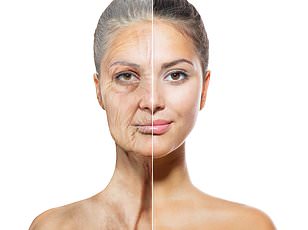Say 'ahhh': Computer programme diagnoses diseases by analysing the colour of your TONGUE
A computer algorithm could give you a diagnosis on the spot for diabetes, cancer or tell you if you're at risk of a stroke just by taking a picture of your tongue.
The programme, developed by Iraqi and Australian researchers, has achieved a 98 per cent accuracy in predicting different diseases by analysing the colour of the human tongue.
The proposed imaging system, which replicates traditional Chinese medicine, can diagnose diabetes, stroke, anaemia, asthma, liver and gallbladder conditions, COVID-19, and a range of vascular and gastrointestinal issues.
Engineering researchers from Middle Technical University (MTU) and the University of South Australia (UniSA) used 5,260 images to train machine learning algorithms to detect tongue colour in a series of experiments.
Scientists predict smartphones will one day be used to diagnose disease in this way.

A camera which was placed 20 centimetres from a patient, captured their tongue colour and the imaging system predicted their health condition in real time

Examining the tongue for signs of disease is seen in a 2000-year-old practice widely used in traditional Chinese medicine, explains senior author Professor Ali Al-Naji
A new paper published in Technologies outlines how the proposed system analyses tongue colour to provide on-the-spot diagnosis, confirming that AI holds the key to many advances in medicine.
In the study, two teaching hospitals in the Middle East supplied 60 tongue images from patients with various health conditions.
A camera which was placed 20 centimetres from a patient, captured their tongue colour and the imaging system predicted their health condition in real time.
The artificial intelligence (AI) model was able to match the tongue colour with the disease in almost all cases.
Examining the tongue for signs of disease is also seen in a 2000-year-old practice widely used in traditional Chinese medicine, explains senior author, MTU and UniSA Adjunct Associate Professor Ali Al-Naji.
'The colour, shape and thickness of the tongue can reveal a litany of health conditions,' he said.
'Typically, people with diabetes have a yellow tongue; cancer patients a purple tongue with a thick greasy coating; and acute stroke patients present with an unusually shaped red tongue.
'A white tongue can indicate anaemia; people with severe cases of COVID-19 are likely to have a deep red tongue; and an indigo or violet coloured tongue indicates vascular and gastrointestinal issues or asthma.'
Co-author UniSA Professor Javaan Chahl says that down the track, a smartphone will be used to diagnose disease in this way.
'These results confirm that computerised tongue analysis is a secure, efficient, user friendly and affordable method for disease screening that backs up modern methods with a centuries-old practice,' he said.










































































































































































































































































































































































